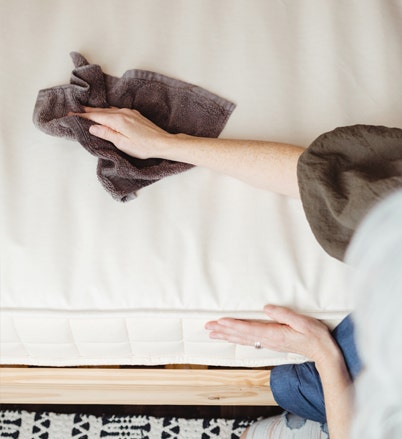Twice a year, we engage in a strange ritual: changing the clocks forward or backward by an hour. Some people barely notice, while others find themselves groggy, disoriented and wondering why we still do this. Love it or hate it, daylight saving time affects nearly everyone in the U.S. – especially when we "spring forward" and lose an hour of sleep.
But why does daylight saving time exist in the first place? Does it really save energy, or is it an outdated practice? More importantly, how does this shift impact your health, your sleep and, if you're a parent, your kids’ school performance? If you’ve ever found yourself struggling to adjust – or questioning the logic behind it all – you’re not alone.
In this guide, we’ll break down the history of daylight saving time, debunk common myths and explain why some states and countries have ditched it altogether. We’ll also share expert-backed tips to help you transition smoothly, protect your sleep and even use the time change to your advantage. If you’re tired of feeling exhausted every March, this is the blog for you. Let’s dive in.
When Does Daylight Saving Time Start?
Every year, daylight saving time begins on the second Sunday of March, when clocks “spring forward” one hour at 2:00 a.m. In 2025, this shift will happen on March 9. That means sunrise and sunset will both occur an hour later, giving us more daylight in the evening but at the cost of an hour of sleep.


This time change can feel abrupt, especially for those who rely on a strict sleep schedule. Night owls may struggle with waking up earlier, while early risers might enjoy the extra daylight in the evening. Either way, the sudden shift disrupts our internal clocks, and it often takes a few days – or even weeks – for our bodies to fully adjust.
While many people assume daylight saving time is a long-standing global tradition, the practice has a surprisingly complicated history. Before we get into how it affects sleep, let’s explore why it exists in the first place – and whether it still serves a purpose today.
Why Does Daylight Saving Time Exist?
The idea of shifting the clocks to make better use of daylight isn’t new. Benjamin Franklin famously suggested it (half-jokingly) in the 18th century as a way to save candle wax. But daylight saving time as we know it didn’t take hold until World War I, when countries, including the U.S., temporarily adopted it to conserve fuel. It was reinstated during World War II for similar reasons, then made a permanent, though still controversial, fixture of American life in 1966 with the passage of the Uniform Time Act.
The reasoning behind daylight saving time has always been about energy efficiency – more daylight in the evening means less need for artificial lighting. But does it actually work? Studies on energy savings have been mixed, with some research suggesting that any reduction in lighting use is offset by increased air conditioning and heating costs.
Common Myth Debunked: Was Daylight Saving Time Created for Farmers?
Despite popular belief, daylight saving time was not designed to benefit farmers. In fact, many farmers originally opposed it because it disrupted their schedules. Crops and livestock follow the natural sunrise, not the clock, and shifting the time made it harder to coordinate with markets and transportation schedules.
How Does the Time Change Affect Your Sleep and Health?
Losing an hour of sleep might not seem like a big deal, but the shift to daylight saving time can throw your body’s internal clock – or circadian rhythm – out of sync. Our bodies rely on consistent light and dark cycles to regulate sleep, and when the clocks jump forward in March, it creates a mismatch between our natural rhythms and the new time on the clock. This can lead to grogginess, difficulty falling asleep and even a mini version of jet lag.
The effects go beyond just feeling tired. Studies have linked the spring time change to a temporary spike in heart attacks, strokes and workplace injuries in the days following the transition. The risk of car accidents also increases as drivers operate on less sleep. The American Academy of Sleep Medicine has even advocated for the elimination of daylight saving time, citing its negative impact on sleep quality and overall health.
How Daylight Saving Time Affects Kids and School Schedules
For adults, the spring time change can be frustrating, but for kids, it can be downright disruptive. Young children and teenagers are especially sensitive to schedule shifts, and losing an hour of sleep can throw off their routines for days or even weeks. Students may struggle to concentrate in the days following the transition. For teenagers, who are already prone to sleep deprivation due to early school start times, daylight saving time can make mornings even more difficult.


While the lost hour can be a challenge, parents of young children can actually use the shift to their advantage. If you’re trying to get your child to fall asleep earlier, daylight saving time naturally pushes bedtime an hour forward, making it an ideal opportunity to adjust their routine. Start shifting bedtime by 10-15 minutes per night leading up to the change, and reinforce a calming pre-bedtime routine to help them settle in.
For older kids, encourage exposure to morning sunlight to help reset their internal clocks, and limit screen time in the evening to make falling asleep easier. With a little planning, the transition doesn’t have to be a battle – it can be a chance to build healthier sleep habits.
Tips for Adjusting to the Spring Time Change
Daylight saving time might be inevitable, but feeling exhausted for days afterward doesn’t have to be. With a little preparation, you can ease the transition and help your body adjust more smoothly.
- Start shifting your schedule early. Instead of waiting until the night before, try going to bed 10-15 minutes earlier each night leading up to the time change.
- Get plenty of morning sunlight. Natural light is the strongest cue for resetting your internal clock, so spend time outside in the morning.
- Avoid screens before bed. The blue light from phones, tablets and TVs can interfere with melatonin production, making it harder to fall asleep.
- Watch your caffeine and alcohol intake. Both can disrupt sleep, so avoid them in the afternoon and evening while your body is adjusting.
- Stick to a consistent sleep routine. Going to bed and waking up at the same time every day (even on weekends) can help your body adapt faster to the new schedule.
Will We Ever Get Rid of Daylight Saving Time?
Every year, as people groggily adjust to losing an hour of sleep, the debate over daylight saving time reignites. Is it still necessary? Should we make it permanent? Or should we scrap it altogether?


In recent years, there has been growing support for ending the twice-yearly clock change. The Sunshine Protection Act, a bill introduced in the U.S. Congress, aims to make daylight saving time permanent nationwide. Proponents argue that longer evening daylight hours encourage outdoor activity, boost the economy and reduce energy consumption. However, the bill has stalled multiple times, leaving the future of daylight saving time uncertain.
On the other side of the debate, sleep experts and medical professionals argue that permanent standard time – rather than permanent daylight saving time – would be the healthier choice. The American Academy of Sleep Medicine advocates for keeping standard time year-round because it better aligns with our natural circadian rhythms. Studies show that staying on daylight saving time permanently could lead to more sleep deprivation, as darker mornings make it harder for our bodies to wake up naturally.
Despite ongoing debates, the U.S. remains in a cycle of springing forward and falling back. Some states, like Florida and California, have passed measures to make daylight saving time permanent, but federal approval is required for these changes to take effect. Until that happens, we’ll continue adjusting our clocks twice a year – at least for the foreseeable future.
Does Everyone Observe Daylight Saving Time?
While most of the United States follows daylight saving time, there are a few exceptions. Hawaii and most of Arizona do not observe daylight saving time, meaning they stay on standard time year-round. But why? In Hawaii, daylight saving time simply isn’t necessary. Because the state is so close to the equator, the length of daylight remains fairly consistent throughout the year. There’s no real benefit to shifting the clocks when sunrise and sunset times don’t vary much.
Arizona, on the other hand, has a different reason for opting out. With its hot desert climate, later sunsets in the summer would mean extra hours of sweltering heat in the evening. By staying on standard time, Arizonans avoid pushing daylight later into the hottest part of the day, which helps reduce air conditioning use and keeps outdoor activities more comfortable. However, the Navajo Nation, which spans parts of Arizona, New Mexico and Utah, does observe daylight saving time, creating an unusual time zone divide within the state.
Common Myth Debunked: Is Daylight Saving Time Observed Worldwide?
Many people assume daylight saving time is a global standard, but it’s actually quite inconsistent across the world. Many countries, including most of Asia and Africa, don’t use it at all. Others, like Japan, abandoned it decades ago. Even within Europe and North America, the practice is frequently debated, with some regions pushing to eliminate it permanently.
Making the Most of Longer Days
While debates continue over whether we should keep, eliminate or modify daylight saving time, one thing is clear: how you adjust to the change makes all the difference. By preparing your sleep schedule in advance, getting plenty of morning sunlight and being mindful of how the shift affects your body, you can minimize the grogginess and make the transition easier. And if you’re among those hoping for an end to the twice-yearly clock changes, you’re not alone. Whether daylight saving time is here to stay or on its way out, at least now you’ll be prepared to spring forward with a little less struggle.
Waiting for spring? Here are four ways to survive the winter darkness in the meantime.
 BABY
BABY  KIDS
KIDS  ADULT
ADULT  LEARN
LEARN  STORES
STORES 



